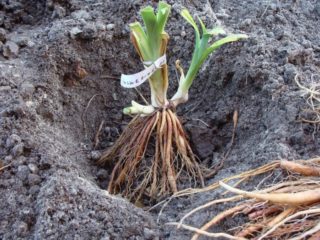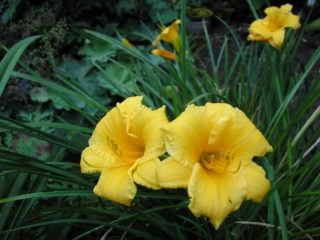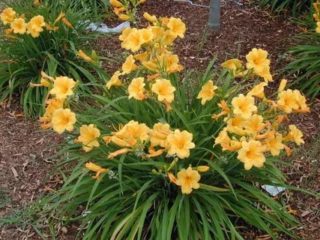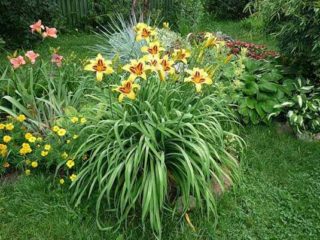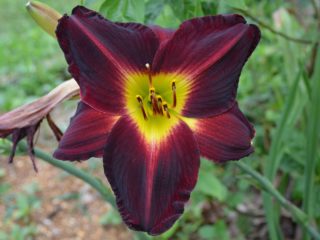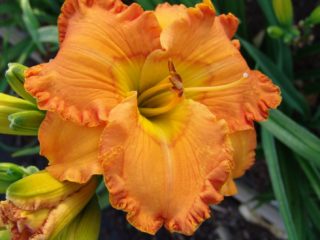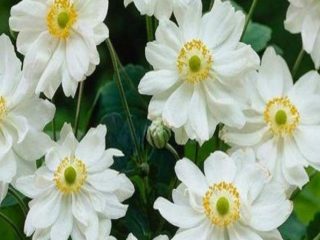Content
It is necessary to feed daylilies in order to obtain an ornamental plant with abundant flowering. The means are selected taking into account the growing season, the work is carried out in compliance with the recommended dosage. Lack of nutrition affects the growth of the culture, the result of the excess will be the absence of flowers.
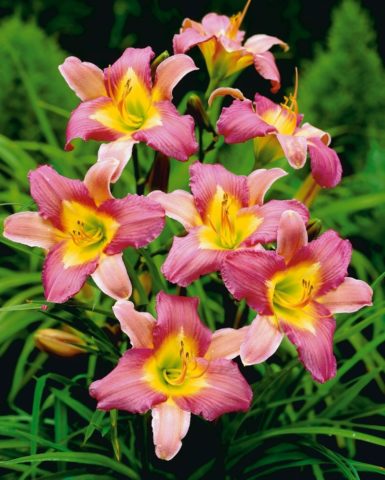
The decorative form can be preserved only if the conditions of agricultural technology are observed.
Features of feeding daylilies
A common problem encountered when growing daylilies is chlorosis. The disease occurs against the background of a decrease in the production of chlorophyll in the leaves and a violation of photosynthesis. Development slows down, the plant looks weak, budding becomes inferior: flowers are rare, small in size. The more severe form causes wilting and yellowing of the green mass, in this case we are not talking about flowering at all.
The main reason is inadequate nutrition. If the soil is scarce, the plant needs feeding. Even on fertile soils, daylilies respond well to metered fertilization.
Top dressing of daylilies is carried out with preparations corresponding to the growing season:
- in the spring, when the leaves of the plant bloom and the process of sprouting begins, nitrogen-containing agents are introduced. They will be the impetus for growth;
- when laying buds, potash and phosphorus fertilizers are used;
- when flowering is over, potassium and phosphorus are used, but organics are completely excluded.
Top dressing is applied at the root or the plant is sprayed. Many gardeners, based on personal experience, recommend combining activities. Part of the drug is embedded in the ground or diluted in water for irrigation, the second half of the substance is treated with the aboveground mass.
Fertilization of daylilies with folk and organic fertilizers
For feeding, they use not only chemicals from the chemical industry, but also those prepared independently. Herbal infusion gives a good result. It is prepared as follows:
- The cut grass from the site is crushed for fast fermentation.
- Placed in a container (not metal), fill it with water so that it covers the grass by about 15-20 cm.
- To stop the fermentation faster, add Urea about ½ tbsp. l. for 25 liters of liquid.
- Insist on the sun for 1.5 weeks, stir the grass periodically.
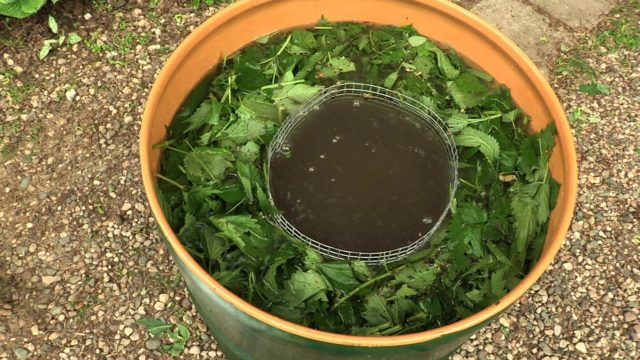
The finished infusion will be dark brown with no foam on the surface.
The working solution is prepared at the rate of 1/10.
Wood ash is used for feeding, but the composition of the soil must be taken into account. For daylilies, neutral or slightly acidic soil is needed, and ash reduces acidity.
An infusion is made from poultry droppings or mullein, using a 1/10 concentrate.
A review of industrial biologics that have worked well for daylilies will help you choose the right option.
Father-owner
Organomineral humus agent based on Gummi-90 biofertilizer. It is necessary for enrichment with phytobacteria and soil loosening. Contains a set of elements necessary for the growth of daylilies (magnesium, potassium, iron).

Introduced in early spring or at the time of budding
Ideal
The main component of the product is vermicompost obtained from the vital activity of earthworms. Macronutrients (phosphorus and potassium) necessary for the growth of daylilies have been added to the composition. "Ideal" is referred to as alkaline fertilizers; when used, the composition of the soil is taken into account.
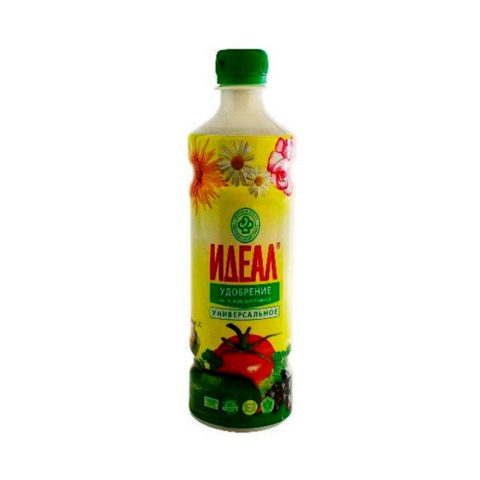
Used at the beginning of the growing season, not suitable for autumn feeding
Bucephalus
A product based on horse dung extracts. The composition includes organic compounds with nitrogen, potassium and phosphorus, a set of macronutrients and humic acid. Effectively fights soil pests, prevents the accumulation of daylilies from the soil of heavy metals and nuclides.
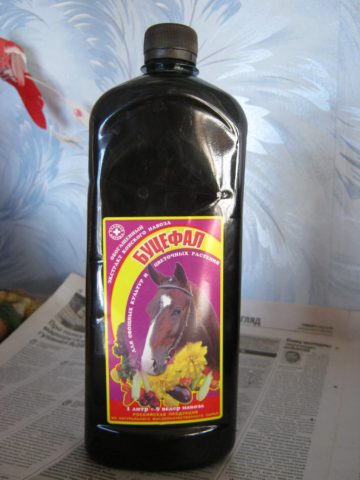
Used as root dressing
Zircon
A drug that stimulates growth, shoots and buds in daylilies. This dietary supplement is based on Echinacea purpurea and a complex of natural acids. The action of the remedy is aimed at stabilizing processes at the cellular level, increasing the resistance of daylilies to abnormal environmental factors.
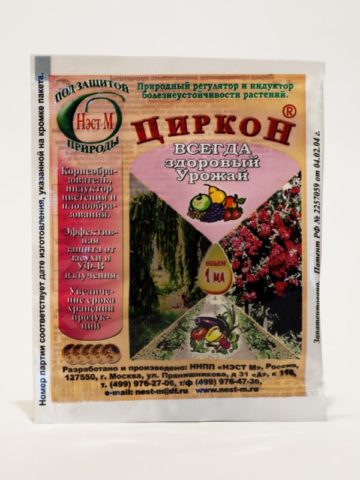
It is not recommended to use in combination with alkaline products.
Humate + 7
The main composition of the preparation is humus and a set of micro- and macroelements necessary for the growth of daylilies. The main purpose of the product is to build up and strengthen the root system.

Strict adherence to the dosage is necessary, oversaturation with humates can stop the growth of daylilies
Fertilization of daylilies with mineral fertilizers
Organic matter is aimed at improving the condition of the soil, but is less effective as a direct feeding, therefore, along with biological agents, mineral and complex fertilizers are used.
Potassium nitrate
The main components of the drug are nitrogen and potassium. They help build up green mass and promote abundant flowering. Used as the main root dressing at the beginning of the season. At the time of budding, the plant is sprayed with a solution.
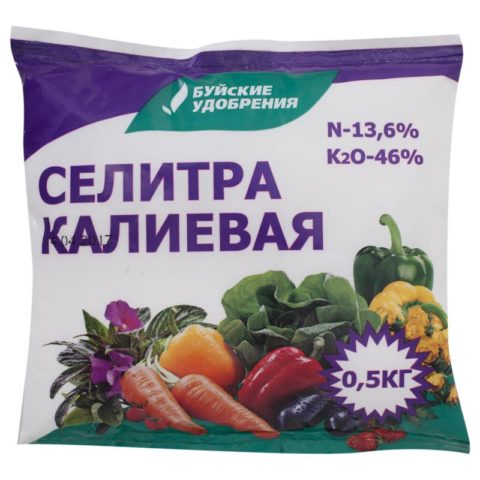
Not suitable for autumn feeding due to nitrogen content
Nitrophoska
A widespread remedy among gardeners, effective at the beginning of the growing season of daylilies. Consists of phosphorus, nitrogen and potassium - the main elements necessary for the growth of crops.
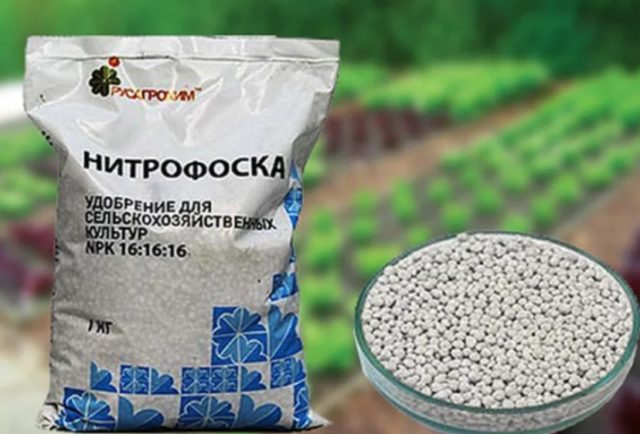
The product is effective when used at the beginning of the growing season.
Kemira
The drug is produced in different directions: for spring, autumn feeding and universal. Mineral fertilizer is characterized by a long period of action.
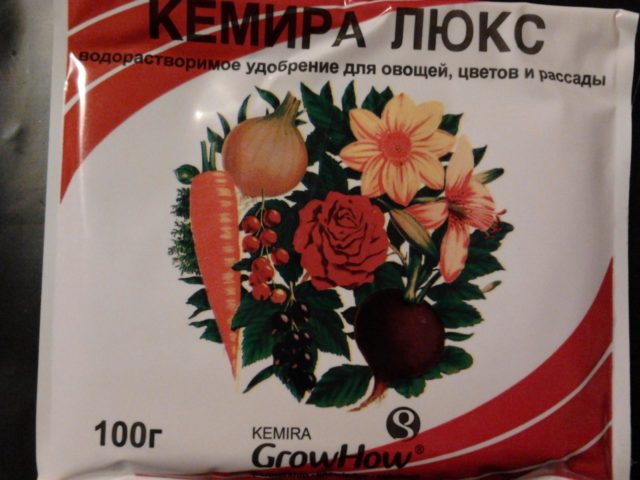
The tool lowers the acidity of the soil
Aquarine
Latest generation chelated fertilizer. Does not accumulate in the soil, completely disintegrates. Not toxic to humans, safe for animals. "Aquarin" with a neutral or slightly acidic reaction is suitable for complex use with other chemicals.
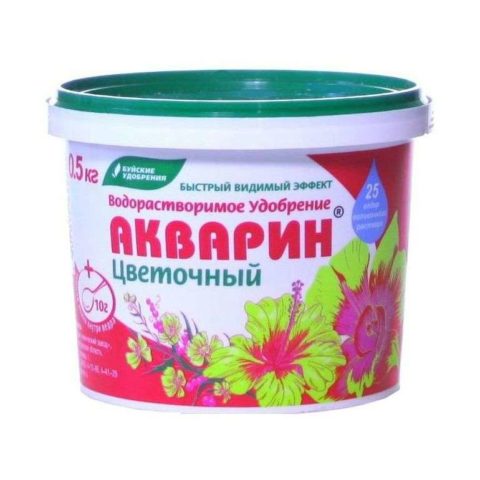
Contains all the nutrients needed for daylilies
How to fertilize daylilies
For additional nutrition of daylilies, complex fertilizers, organic and mineral, are used, often they use means prepared independently according to folk recipes. Top dressing is foliar and root in nature.
How to feed daylilies in autumn
Autumn feeding of daylilies is relevant after flowering. The procedure is carried out around the end of August or the beginning of September. Before winter, when the biological processes of the plant slow down, they bring in products based on phosphorus and potassium. Nitrogen preparations are not recommended. If there is a high concentration of nitrogen in the soil, daylilies will quickly grow, form strong shoots with dense foliage, but there will be no flowering. Therefore, organic matter is not introduced in the fall.
Apply the means "Kemira autumn" and sprinkle the root circle with wood ash. If there is mulch near the plant, it must be pushed aside and fertilized on open ground, after the event, the material can be returned to its place. If the top dressing is root, this condition is relevant for any season.
Top dressing of daylilies in spring and summer
Feeding daylilies is important in different seasons. At each stage of growth, the functionality of food is different. If at the end of the season the activities are aimed at the spring laying of the buds, then at the beginning - fertilization is needed for a full vegetation. The care of daylilies includes feeding in the spring, which is carried out in mid-April or early May (for regions with a temperate climate). A complex of mineral fertilizers is used. An ideal option for daylilies is Fertika. This is a preparation for root dressing, which is applied as follows:
- The root circle is watered abundantly.
- Pellets are scattered around the plant.
- Loosen the soil and water again.
For spring feeding, this event will be enough.
When daylilies gain green mass and begin to lay buds, foliar feeding is recommended, it is more effective. The absorption of micronutrients occurs through the pores of the leaf plates. It is taken into account that their main localization is on the lower part of the leaves, so they should be covered to a greater extent.
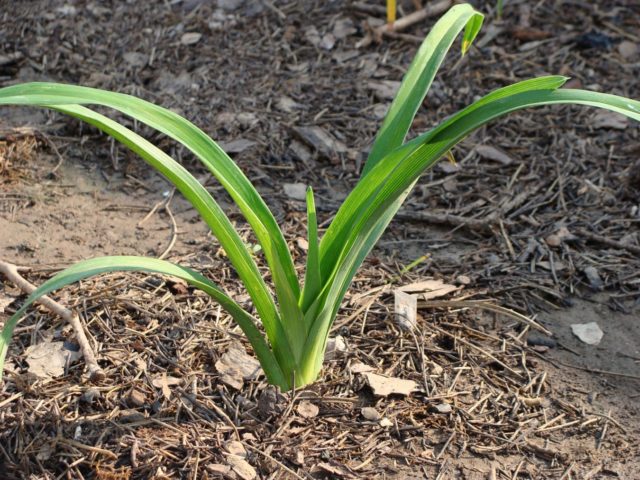
For this growth time, sodium or potassium-based humates are suitable, powerful growth stimulants
For daylilies use "Ecorost" or "Prompter". Can be replaced with infusion of bird droppings or fermented weeds.
When daylilies bloom, feeding is stopped, they received a sufficient amount of trace elements, and the excess will only damage.
Fertilization rules
Fertilizing crops is a prerequisite for agricultural technology. But the products are suitable for various soil compositions. Therefore, it is necessary to determine the indicator of the acid-base reaction of the soil and orient the fertilizing to the composition.
If the soil does not meet the biological requirements of daylilies, feeding may become ineffective. Before planting the plant, the indicator is adjusted, the alkaline medium is lowered by the introduction of granular sulfur, the high acidity is neutralized with dolomite flour.
When growing daylilies, certain feeding rules are followed:
- The preparations are applied only on well-moistened soil, after precipitation or watering. The procedure is carried out early in the morning or in the evening, when there are no direct rays. This will eliminate the appearance of burns on the leaves.
- The working solution for feeding is made in compliance with a strict dosage; daylilies will more easily tolerate a lack of nutrients than an excess of them.
- The frequency of the event is carried out taking into account the fact that mineral compounds do not linger in the upper layers for a long time, they go deeper. Feeding is necessary every two weeks.
- If, when planting daylilies, the laying of a nutrient substrate was carried out, feeding the plant will not be required during the first year of growth.
- It is not recommended to feed daylilies in early spring at unsteady temperatures, nutrients will stimulate growth, and in case of recurrent frosts, daylilies can lose the main green mass. In this case, it will take longer to wait for the plants to bloom.
- On light fertile soils, the frequency of fertilizing and the dosage are reduced. Summer application of organic matter is completely excluded.
Conclusion
It is necessary to feed daylilies for lush flowering and a set of green mass. If the plant is not deficient in trace elements, it is less likely to get sick and resists pests well. The culture overwinters with minimal loss of the root system.
